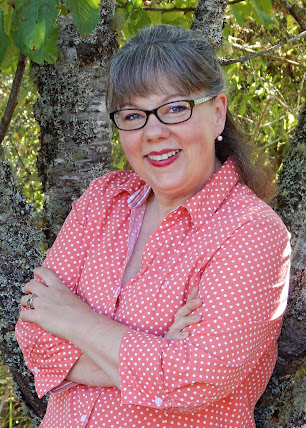 Last week, I blogged about considerations when buying vegetable seeds, but some readers asked for more information about how I, personally, choose my seeds. (If you haven't read the "How to Buy Vegetable Seeds" post yet, I highly recommend you do before proceeding with this post.)
Last week, I blogged about considerations when buying vegetable seeds, but some readers asked for more information about how I, personally, choose my seeds. (If you haven't read the "How to Buy Vegetable Seeds" post yet, I highly recommend you do before proceeding with this post.)
I typically begin by reviewing my garden journal for the previous year. This is simply a Word file where I jot notes about when and what I've planted, how well (or not) it is doing, and whether the amounts I grew were sufficient to feed my family. Very often, I can't remember the name of that certain tomato that produced so abundantly, for example, and I'm ever so glad I made a note of it in my journal.
Next, I get my hands on my favorite seed catalog. This is a regional catalog, full of seeds grown and tested in my specific region. I have, over the years, grown plants from large national seed companies, or from seed companies specializing in other regions, with mixed results. Sometimes I find a keeper, but mostly I find seeds that don't produce very well in my garden. So these days, I mostly stick to one source. Once I look through the catalog one time, just to ooh and ahh, I sit down with paper and pen in hand and make a list of every fruit and vegetable I'd like to grow. Currently, my list looks like this: eggplant kale collards carrots parsnips lettuce tomatoes beets green beans red noodle beans peas Brussels sprouts broccoli cabbage cucumbers onions garlic kohlrabi leeks radish basil chives cilantro mint oregano sage potatoes wonderberries This list does not include edibles I do not need to re-plant, such as my ever-bearing strawberries or my sunchokes.

Next, I usually sit down outside, near my garden plot, and sketch out my potential garden. Here's where I have to "get real" - because I don't have huge amounts of sun in my yard. So, bearing in mind the sun requirements of each plant (as stated in the seed catalog), and bearing in mind that it's never a good idea to grow a particular veggie in the same spot in the garden as it's been the last couple of years (because this can increase problems with pests and disease), I roughly map things out. Often this means crossing things off my list. These choices are difficult to make, but they are necessary. And sometimes they get me thinking more creatively about growing edibles that don't mind a little shade, or unusual but sunny spots where I could grow a vegetable or fruit.
Next, I pick specific varieties. Since our warm season isn't very long, and because I want to grow as many "rounds" of vegetables as possible, I usually lean heavily toward varieties that mature in the shortest length of time. For example, if I want to grow eggplant, I can't choose a variety that matures in 80 days; if I do, I won't get anything edible. Instead, I need the fastest-maturing variety I can find - perhaps one that matures in 54 days, for example. For this sort of warm-season edible, I might even consider purchasing eggplant seedlings from a local nursery to help me get a head start on the growing season.
I also carefully consider whether or not it matters whether the plant is open-pollinated or hybrid. If I want to save my own seed (which is something I'm trying to do more of), I must have open-pollinated varieties. But I've learned there are some things I really can't save seed for because I just don't have enough garden space. For example, I wanted to save seeds from a huge Brussels sprout plant I grew a couple of years ago, but when I read up on how to do it, I learned that it had to be grown 1 mile from all other plants in the B. oler
Then, and only then, I place my seed order.



What type or garden seeds work best in drier soil?
ReplyDeleteGreat reminders. I'm looking online at one of my regional seed catalogs this morning and am overwhelmed by the choices out there! I don't think the heat's an issue here... we normally are in the 90s to low 100s for a couple months--July to early September. :)
ReplyDeleteUnknown, almost all vegetables require irrigation if you live in an area where it doesn't rain much in the summer. However, you can decrease the need for irrigation if you use very wide spacing. This allows plant roots to spread further, finding the moisture they need. That said, some people can grow potatoes without any irrigation, as long as they space them widely. I know of no other vegetable or fruit that can be grown in arid conditions without irrigation.
ReplyDelete